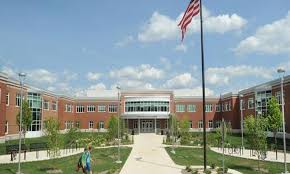Can Student Visa Work and studey in USA
So, you’re thinking about studying in the USA? That’s fantastic! One of the key things you’ll need to know about is the e-hall pass login student visa, which allows you to stay in the U.S. for your studies. But what if you want to work while you’re here? Let’s dive into the nitty-gritty of student visas and working in the USA.
Types of Student Visas
F-1 Visa
The F-1 visa is the most common type of student visa for those who wish to engage in academic studies or language training programs. If you’ve got this visa, you’re in good company. Most international students in the U.S. are on F-1 visas.
M-1 Visa
On the other hand, the M-1 visa is for vocational or technical training. It’s less common but perfect if you’re heading to the U.S. for non-academic or vocational studies.
Applying for a Student Visa
Required Documentation
Before you get your visa, there’s a bit of paperwork involved. You’ll need an acceptance letter from a U.S. school, proof of sufficient financial resources, a valid passport, and a few other documents. It sounds like a lot, but it’s all part of the process.
The Application Process
First things first, you need to be accepted into a SEVP-approved school. Once that’s sorted, you’ll pay the SEVIS fee, complete the DS-160 form, and schedule a visa interview. It might seem daunting, but with a bit of preparation, you’ll sail through it.
Visa Interview Tips
When it comes to the visa interview, the key is to be honest and prepared. They might ask about your study plans, e-hallpass.com financial situation, and ties to your home country. Practice your answers and stay calm.
Working on an F-1 Visa
On-Campus Employment
Good news! As an F-1 student, you can work on-campus up to 20 hours per week during school sessions and full-time during breaks. This is a great way to earn some extra cash and gain valuable experience.
Eligibility Criteria
To be eligible, you need to maintain your F-1 status and be enrolled in a full course of study. It’s pretty straightforward as long as you’re focused on your studies.
Finding On-Campus Jobs
Look out for job postings on campus bulletin boards, career centers, and your school’s website. Jobs in the library, cafeteria, or academic departments are common options.
Off-Campus Employment
Curricular Practical Training (CPT)
CPT allows you to work off-campus if it’s part of your curriculum. This could be an internship, cooperative education, or any other type of required practical training.
Optional Practical Training (OPT)
OPT is another way to gain work experience. You can work for up to 12 months before or after completing your studies. If you’re in STEM, you might even get a 24-month extension!
Severe Economic Hardship
If unexpected financial difficulties arise, you might qualify for off-campus work authorization. It’s a bit of a process, but it’s a lifesaver if you need it.
Working on an M-1 Visa
Practical Training
M-1 students can engage in practical training only after they complete their studies. It’s limited to one month of training for every four months of study, with a maximum of six months.
Restrictions and Limitations
M-1 visa holders have stricter work limitations compared to F-1 students. You can’t work during your studies, and your practical training must directly relate to your coursework.
Benefits of Working While Studying
Working while studying in the U.S. comes with a slew of benefits. You’ll earn money, gain professional experience, improve your English, and make valuable connections. It’s a win-win situation.
Challenges and Considerations
Balancing work and study can be tough. You’ll need excellent time management skills to juggle your classes, homework, and job responsibilities. Plus, there’s the added pressure of maintaining your visa status.
Maintaining Status and Legal Compliance
Important Regulations
Always stay informed about the regulations governing your visa. Attend all your classes, maintain good grades, and don’t exceed the allowed work hours. Simple mistakes can lead to big problems.
Consequences of Violating Visa Terms
Violating the terms of your visa can have serious consequences, including losing your visa status and being deported. Always err on the side of caution and consult with your school’s international student office if you’re unsure.
Tips for Success as a Working Student
Stay organized, prioritize your tasks, and don’t hesitate to seek help when you need it. Connect with other international students—they’re going through the same thing and can offer valuable support and advice.
Conclusion
Studying in the USA is an exciting opportunity, and working while you study can enrich your experience. With the right visa and a clear understanding of the rules, you can make the most of your time in the U.S. Remember to stay focused on your studies, manage your time well, and enjoy the journey.
FAQs
1. Can I work on-campus immediately after arriving in the U.S.? Yes, F-1 visa holders can start working on-campus as soon as their program begins.
2. How many hours can I work during school breaks? You can work full-time during school breaks, meaning up to 40 hours per week.
3. Can I change my job while on OPT? Yes, you can change jobs while on OPT, but you must report the change to your school’s international student office.
4. What happens if I work more than 20 hours per week during the semester? Working more than 20 hours per week during the semester is a violation of your visa terms and could result in losing your F-1 status.
5. Do I need to pay taxes on the money I earn while working on a student visa? Yes, you are required to pay federal and state taxes on your earnings. However, F-1 students are typically exempt from Social Security and Medicare taxes for a limited time.

